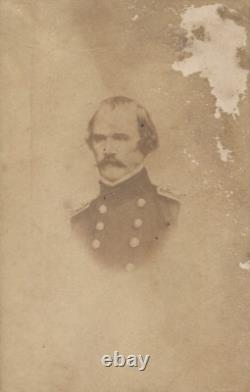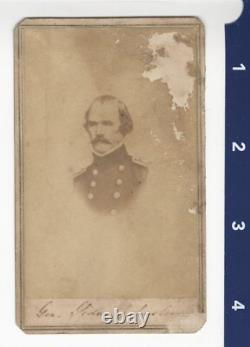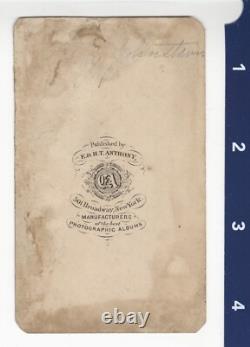
- Homepage
- Conflict
- Photo Type
- Album (9)
- Albumen (14)
- Ambrotype (198)
- Cabinet Photo (67)
- Cdv (473)
- Cdv & Tintype (6)
- Cdvs & Tintypes (7)
- Daguerreotype (84)
- Gelatin Silver (13)
- Mixed (3)
- Negative (10)
- Negative Photo (4)
- Opalotype (4)
- Other (4)
- Photograph (4)
- Snapshot (3)
- Stereoview (23)
- Tintype (518)
- Tintypes (3)
- Unknown (12)
- ... (5500)
- Signed
- Subject
- Children & Infants (21)
- Civil War (31)
- Civil War Soldier (12)
- Ethnic (17)
- Family (23)
- Fashion & Costumes (10)
- Figures & Portraits (149)
- Genealogy (10)
- Historic & Vintage (90)
- History (23)
- Men (58)
- Men, Civil War (54)
- Men, Military (39)
- Military (95)
- Military & Political (569)
- Military & War (14)
- Portrait (15)
- Portraits (14)
- Soldier (12)
- Women (19)
- ... (5684)
- Type
- Belt Buckle (3)
- Carte De Visite (2)
- Cdv (3)
- Cdv Photograph (14)
- Daguerreotype (3)
- Full Cdv Photo Album (2)
- Illustrated Book (3)
- Negative Film Photo (4)
- Pendant (3)
- Photo Album (3)
- Photo Frame (2)
- Photograph (1328)
- Photograph Album (49)
- Picture Book (8)
- Picture Frames (8)
- Print (3)
- Real Photo (rppc) (10)
- Tintype (9)
- Tintype Photo (4)
- ... (5498)
- Unit Of Sale
C. 1860's Confederate General Albert Sidney Johnston SIGNED Photo by Anthony






SUBJECT : General Albert Sidney Johnston. SIZE : Board measures 2.5" x 4", and mounted photo measures 2.125" x 3.375".
Anthony was a pivotal figure in 19th-century American photography, known both for his technical innovations and for founding one of the most influential photographic supply companies in the United States. Born in New York City in 1819, Anthony initially studied civil engineering and worked on early railroad surveys, including efforts under General George B. However, his interest shifted to photography in the 1840s, a field that was still in its infancy at the time. Anthony began his photographic career by experimenting with the daguerreotype process. He opened one of the earliest photographic galleries in New York and soon became involved in manufacturing and supplying photographic materials.By 1850, he had established a business focused on the production and distribution of photographic chemicals, plates, and equipment, operating under the name E. In 1852, his brother Henry T. Anthony joined the firm, and together they built the company into the largest photographic supply house in the United States during the 19th century. Supplied the booming market of professional and amateur photographers with everything from cameras and lenses to chemicals and photographic papers. They also published periodicals, including the "Anthony's Photographic Bulletin", which became a key source of technical information for photographers.
Their catalogues, widely distributed, helped standardize photographic equipment and techniques across the country. In addition to being a businessman, Anthony was also an accomplished photographer. He captured significant events, including scenes from the Civil War, and worked with other notable photographers such as Mathew Brady. His firm also issued thousands of stereoscopic views, cartes de visite, and cabinet cards, contributing heavily to the visual culture of the era. The company became known for its high-quality products and technical expertise, and in the 1880s it merged with Scovill Manufacturing Company to become the Scovill & Adams Company.This move helped ensure the company's continued influence in the photographic industry into the early 20th century. Anthony remained an active leader in photography and business until his death in 1888.
His legacy includes not only his contributions as a photographer but also his instrumental role in shaping the infrastructure that supported the expansion of photography in the United States. Albert Sidney Johnston was born on February 2, 1803, in Washington, Kentucky. He grew up in a frontier environment and later attended Transylvania University before entering the United States Military Academy at West Point in 1822. He graduated in 1826, ranking eighth in his class.
After commissioning into the Army, he served in the 2nd U. Infantry and was posted to various frontier assignments. Johnston resigned his commission in 1834 following the death of his wife and moved to Texas, where he became involved in the Texas Revolution. He joined the Texian Army in 1836 and quickly rose through the ranks, eventually becoming the senior brigadier general and secretary of war for the Republic of Texas.After Texas was annexed by the United States in 1845, Johnston was commissioned a colonel in the U. During the Mexican-American War, Johnston served as a staff officer under General Zachary Taylor, participating in several campaigns though he saw limited combat. Following the war, he continued his service on the frontier and in administrative positions.
In 1855, he was appointed colonel of the newly formed 2nd U. Cavalry, a prestigious unit whose officers included several future Civil War generals. He was later appointed commander of the Department of Texas and, in 1860, transferred to command the Department of the Pacific, based in California.When the Civil War began in 1861, Johnston was still in command in California. Though many Northern leaders believed he would remain loyal to the Union, Johnston quietly resigned his commission and made the long and dangerous journey overland to Texas to join the Confederacy.
Upon his arrival, he was quickly appointed a full general in the Confederate Army by President Jefferson Davis, who considered him one of the South's most capable officers. Johnston was given command of the sprawling Western Department, which covered a vast area from the Appalachian Mountains to the Mississippi River.He faced immense challenges: inadequate supplies, conflicting commands, and a broad defensive front that was vulnerable to Union offensives. After a series of setbacks, including the loss of Forts Henry and Donelson in early 1862, Johnston regrouped his forces and joined with Confederate troops under General P. In April 1862, Johnston launched a surprise attack on Union forces under General Ulysses S. Grant at Pittsburg Landing in Tennessee, in what became known as the Battle of Shiloh. Initially successful in driving Union forces back, Johnston led from the front and was wounded in the leg by a stray bullet.
Unaware of the severity of the injury, which struck an artery behind his knee, Johnston bled to death on the battlefield on April 6, 1862. His death was a major blow to the Confederate cause, and he was the highest-ranking officer on either side to be killed during the war.
Albert Sidney Johnston was widely mourned in the South, where he was hailed as a tragic hero. Jefferson Davis regarded him as the most promising general in the Confederacy, and his early death left many speculating on what might have been had he lived. His military career spanned more than three decades, during which he served under three national flags-those of the United States, the Republic of Texas, and the Confederate States-making him one of the most experienced and symbolically important commanders of his era.
